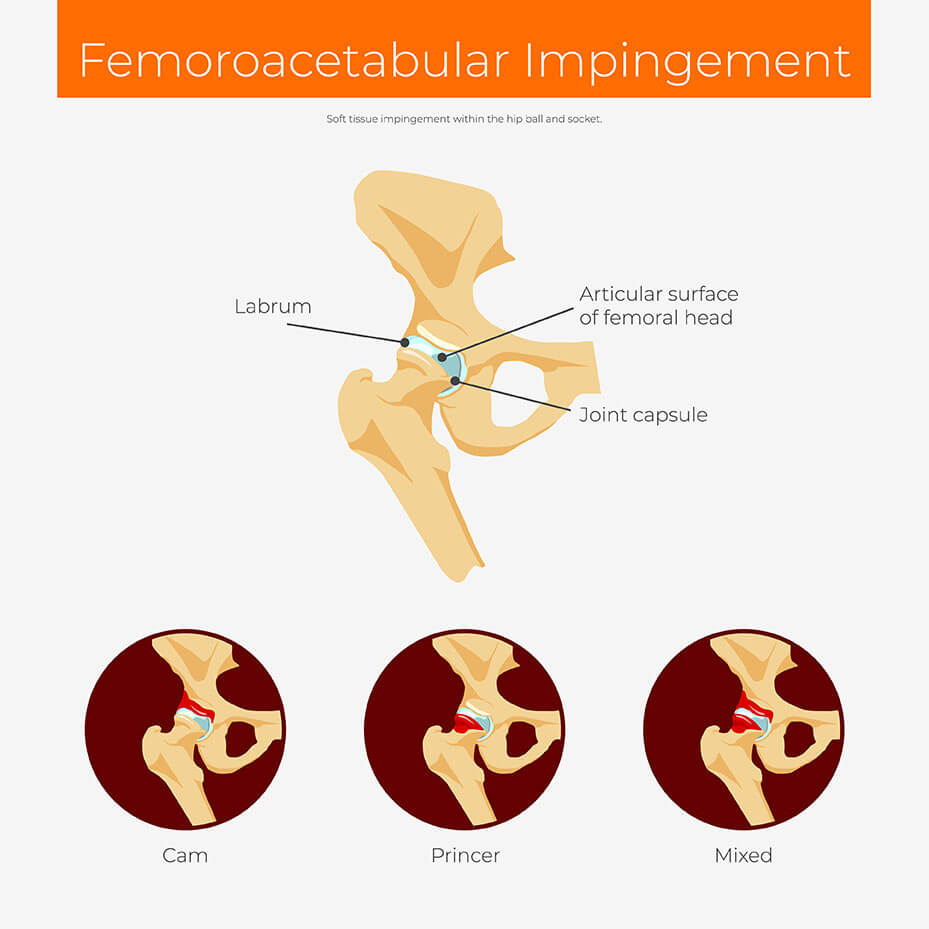What is a hip impingement?

Femroacetabular impingement occurs when the femoral head (ball of the hip) pinches up against the acetabulum (cup of the hip). When this happens, the cartilage that surrounds the acetabulum can be damaged causing hip pain and tightness.
There are three types of morphologies, and they are common within the general population (around 30%) and present in people who aren’t presenting with symptoms.
Cam
Abnormality of the neck of femur. This is more coming in male athletic men, up to 89% and 10-25% of the general population.
Pincer
Abnormality of the “coverage” of the femoral head (acetabulum) in which the rim of the head is extended greater than a typical amount. This is found in approximately 20% of the population, however, is more common in males.
Combined/mixed
This is a combination of both Cam and Pincer impingements. Approximately 85% of patients with hip impingements have this type of mixed morphology.
What are the signs and symptoms of hip impingement?
Symptoms can include pain, catching, grinding, giving way, reduced range (specifically internal rotation), difficulty running, jumping and kicking
What are the risk factors for hip impingement?
Some individuals the abnormal shape of their thigh or hip bone is present since birth, however, it is common to develop this shape over time typically in athletes that participate in sports involving twisting and squatting movements.
What is the treatment for hip impingement?
Treatments may include avoiding impingement positions, modifying activity/sport, including neuromuscular control and strengthening, manual therapy, or possibly requires a surgical intervention.
Katelyn Lynch – Physiotherapist

